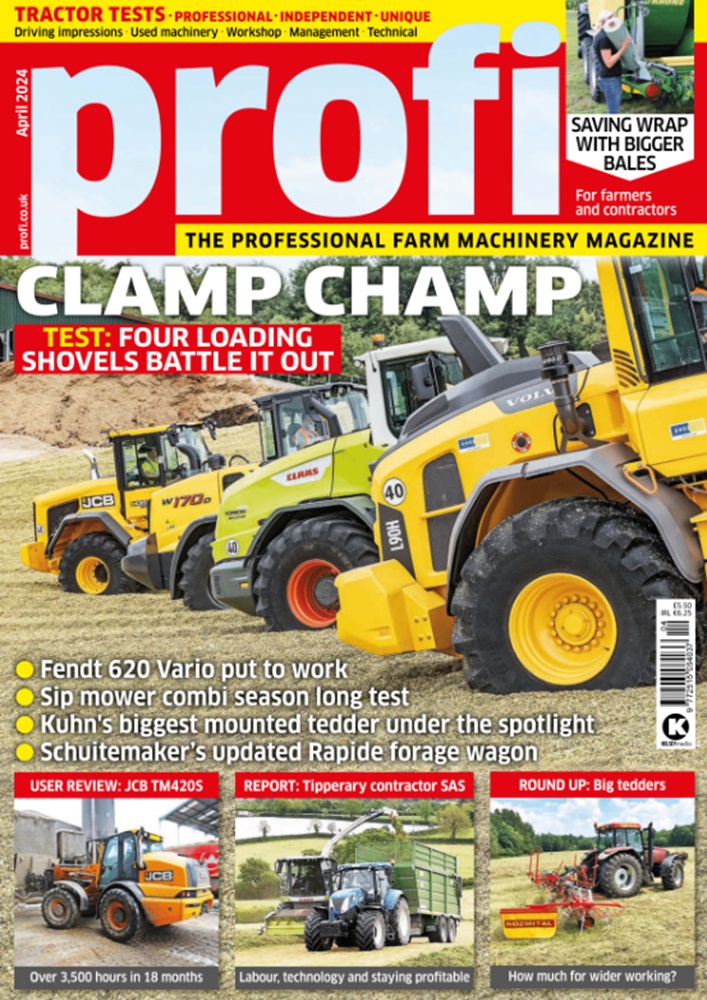With the Joker RT, Horsch has developed a flexible disc harrow, largely down to a healthy list of options to suit the job. We’ll still tell you where there’s potential for improvement, though.
KEEPING IT BRIEF
- The 6.0m wide Joker is one of the latest models in the Horsch RT series.
- You can use the packer for headland turns. This improves the weight distribution.
- Reliability and overall finish impressed us.
- Minor details like the transport locking system could do with a rethink.
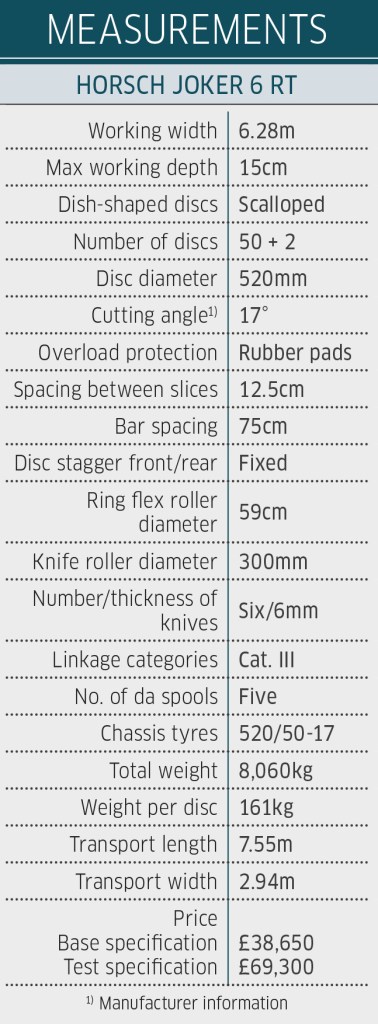
Horsch has been marketing the semi- mounted Joker RT line for about 16 years, with a revamp back in 2019 bringing a number of modifications. One of these mods refers to the hydraulic cushioning for the running gear, which is now available after the rear roller. The disc legs were also part of the freshen-up, helping to improve the amount of clearance for soil and trash to flow through the machine.
The Joker 6 RT we had on test has a working width of more than 6.0m, which puts it bang in the middle ground of the range. Other widths are 5.0m, 7.0m, 8.0m, 10m and 12m. Standard disc diameter is 52cm, but Horsch has just added a 58cm version that requires a different leg design and frame — it wasn’t just a matter of popping on larger diameter discs.
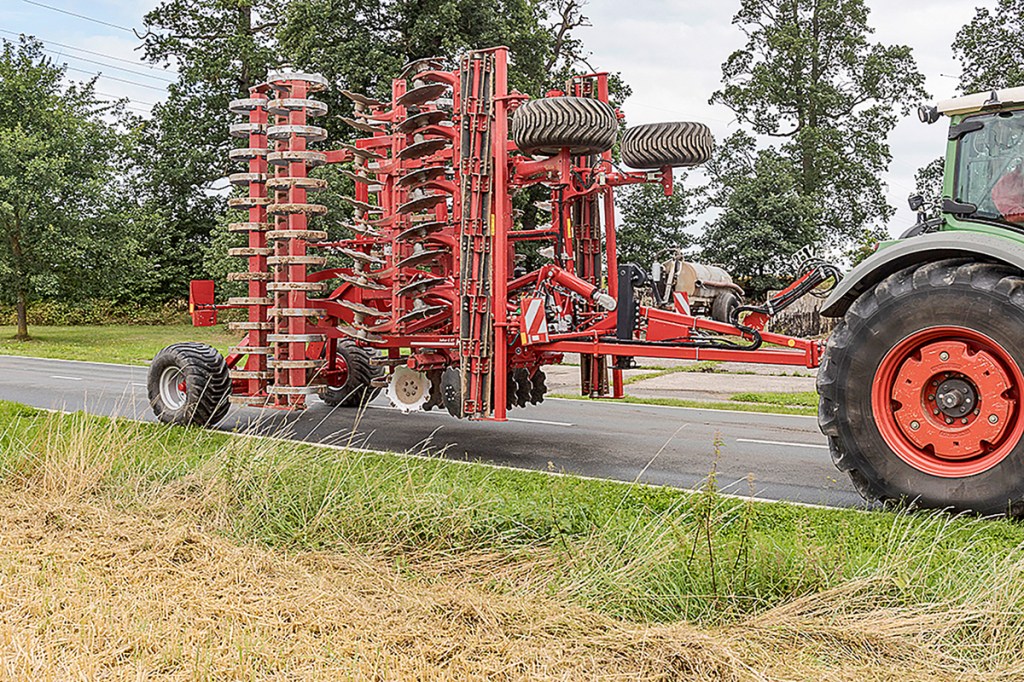
With the measuring tape out, our 6 RT was 7.55m long, 2.94m wide and 3.58m high when folded in its transport position — with 18cm ground clearance. Approved maximum road speed is 40km/hr. In the field, we measured this ‘6.0m model’ as 6.76m wide and exactly 6.28m wide between the two outer main discs. So, a bit of extra bang for your buck.
Easy attachment
We coupled our Joker to the tractor’s Cat. III lower links, although this cultivator is also available with a hitch ring or K80 ball. We also really liked the heavy-duty parking stand complete with crank — it’s sturdy, wide and easy to use.
Next, you connect up the five double-acting hydraulic hoses for the RT’s linkage, folding, drawbar cylinder, leading knife roller and hydraulic depth control. As you can see our machine had pretty much all the extras.
Lastly, plug in the lights and hoses for the air brake. The hydraulic connectors are slightly angled and easy to connect single-handedly to every tractor we used during the test. Each connector also has a lasered pictogram that depicts its function along with plus and minus markings — great! The hose rack, too, is very well done.
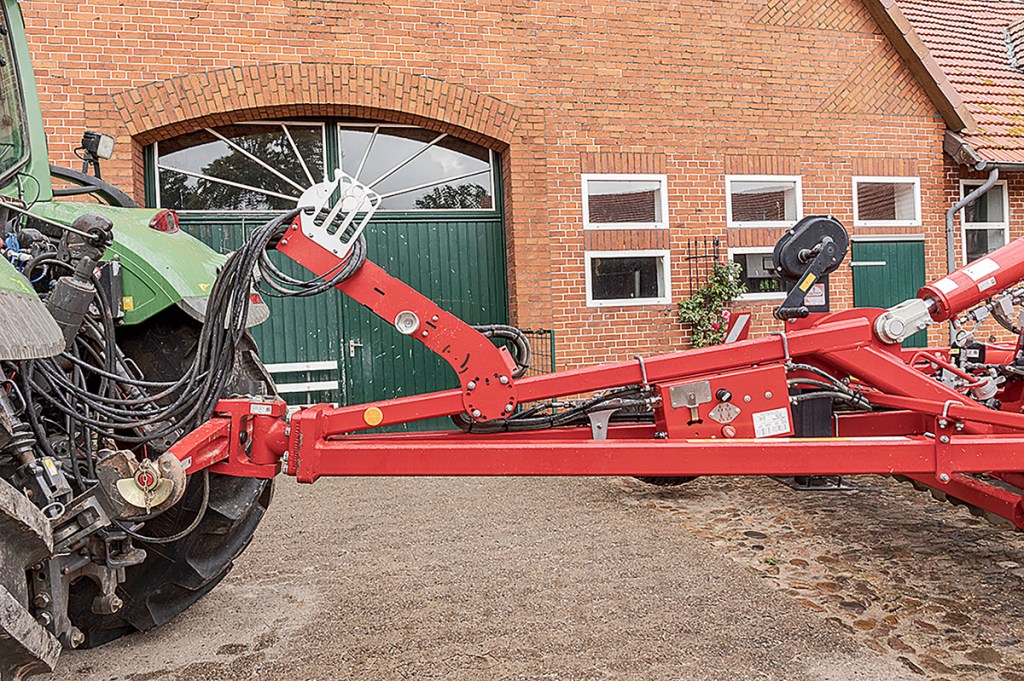
Once you arrive in the field, you have to remove the transport lock. In this case, that means removing four aluminium shim clips from the pistons that act as stoppers on the rams for the running gear and three more from the drawbar ram. While it is good to hop off the tractor and stretch your legs there’s a good chance the shims will not be fitted, so a better, more up-to-date solution is needed here.
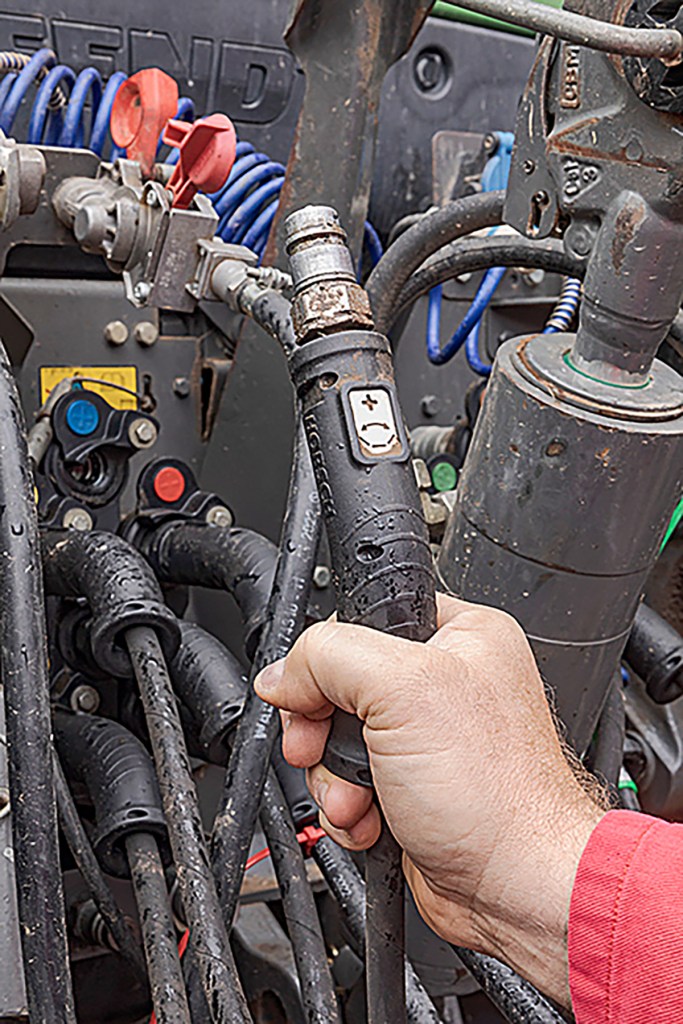
Optional knife roller
A front knife roller set-up is available for an additional £10,730. Alternatively, there’s a levelling board option (£5,640). The knife roller measures 30cm in diameter and is split into two sections, each boasting six knives positioned next to and behind each other. The knives in the middle mount on the core of the roller for better stability. Sadly, the 55cm wide and 6mm thick knives are not reversible.
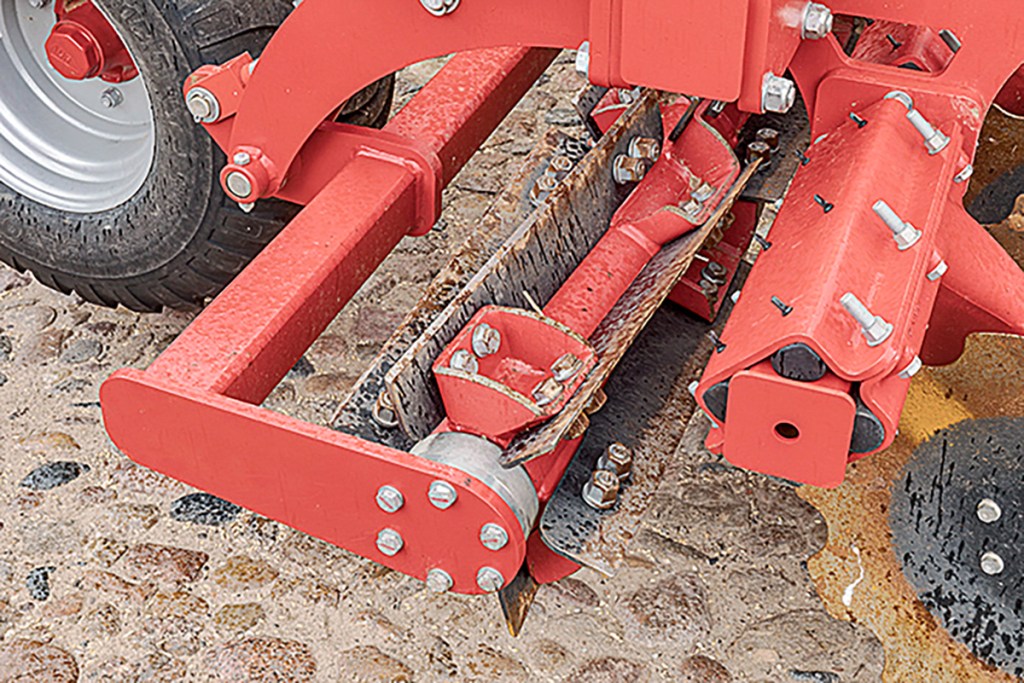
You can set the hydraulic pressure of the knife roller from the seat with the current pressure shown on the cab-based gauge. Once the target pressure is reached, you can knock off the spool as the pressure is now maintained by an accumulator. If the roller runs over a stone, there is some give in the system for the roller to move upward and not get damaged. Excellent. Soil build-up on the roller was not a problem during our test.
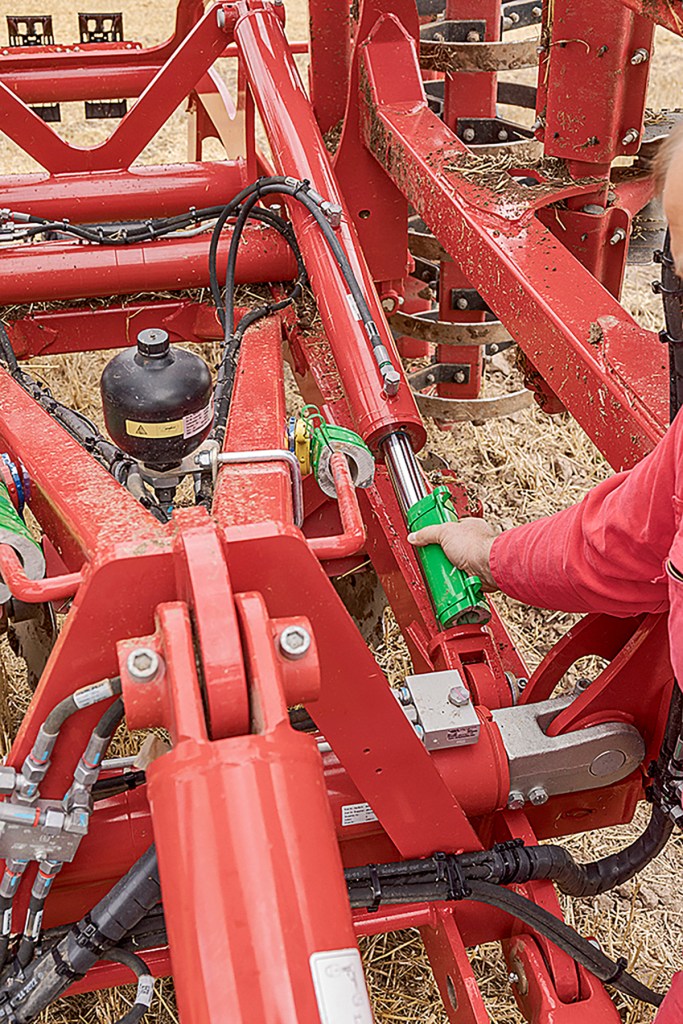
We rarely used the knife roller during the summer to autumn period we had the RT. It proved to be no real advantage in chopped cereal straw and only of little use after rape. Where it really starts to shine is in forage maize stubble. Here we noticed a slightly positive effect as the knives work across the direction of travel.
The situation was different in grain maize, where the knives merely rolled over the thick straw mat without much cutting, but this level of trash will not be a common occurrence for growers in the UK.
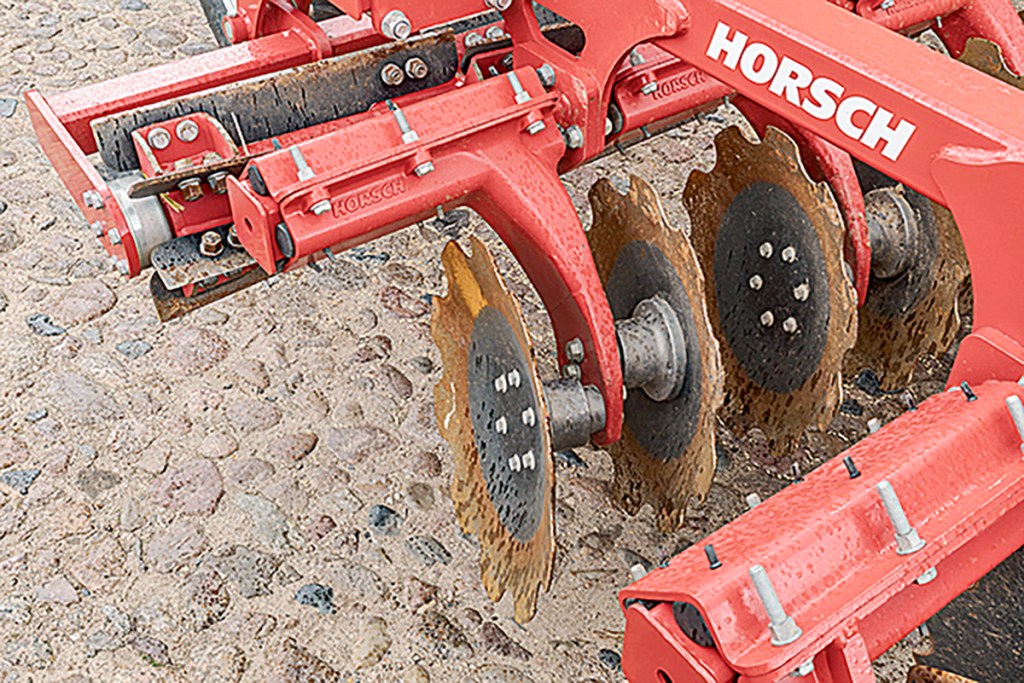
Two discs on each leg
Our test machine had two rows of 52cm diameter, scalloped hollow discs with a thickness of 6mm. They are set to the right on the first row and to the left on the second gang. Disc angle is 17° to the direction of travel, and the work is with a slight undercut of 6°. You can opt for discs with a serrated or wavy-edge.
Two discs are mounted on each arm spaced at 25cm, equating to a cut every 12.5cm across the working width. The distance between the first and second gang is 75cm. Leg attachment to the frame is done using a 39cm clamping plate and six bolts per leg. As usual, the clamping plates are cushioned on four rubber blocks. The discs all run with sealed hubs, each with two permanently lubricated tapered roller bearings and a five-fold cassette seal
A fan-shaped outer disc is mounted on both ends. When the cultivator is folded, six discs on each gang remain under the machine.
Double flex roller
The roller runs about 30cm behind the rear gang of discs; there is no harrow running between the two units or behind the roller. Our test machine had the double spring ring roller, which Horsch calls a ring flex roller. Each of these rings consists of 7cm wide flat steel bars that are bent to form two semi rings that are attached to a 140mm square tube. The packer measures 59cm in diameter and the distance between the two rollers is 80cm.
The rings on the front and rear rolls are offset; the self-cleaning is good. The line spacing is 12.7cm. The roller frame has a central pivot, like a bogey axle for improved contour following — very nice. Overall, we were happy enough with the versatility of the tandem roller. With its weight of around 200kg per metre of width, the roller is best suited to light to medium soils.
The roller, together with the standard front depth wheels (400/60-15.5), is tasked with controlling the discing depth. The wheels are also available as double wheels as an option. Courtesy of the welcome hydraulic depth control (£2,120), the Joker is very easy to adjust — great.
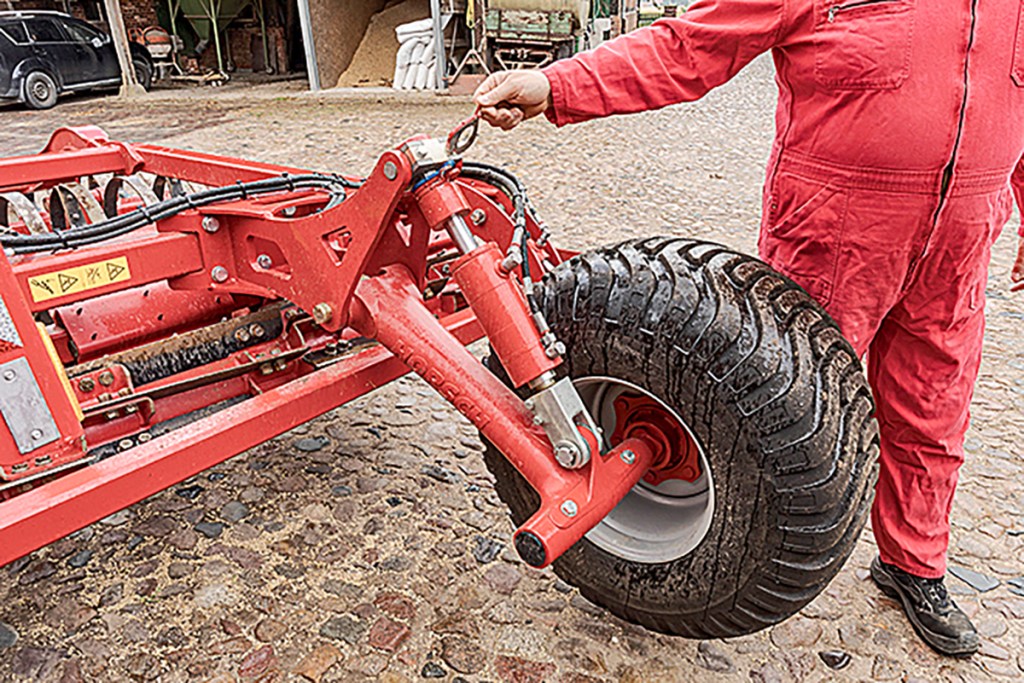
To ensure that the RT always works parallel to the ground, the frame can be levelled with clip-on shims on the hydraulic cylinders on the depth wheels. We used this option once at the beginning, but then felt we didn’t need it again. In our applications, we were able to work almost at full width and 5-12cm deep. Optionally, you can also deactivate the disc field completely if you only want to use the knife roller and the rear roller — a nice detail.
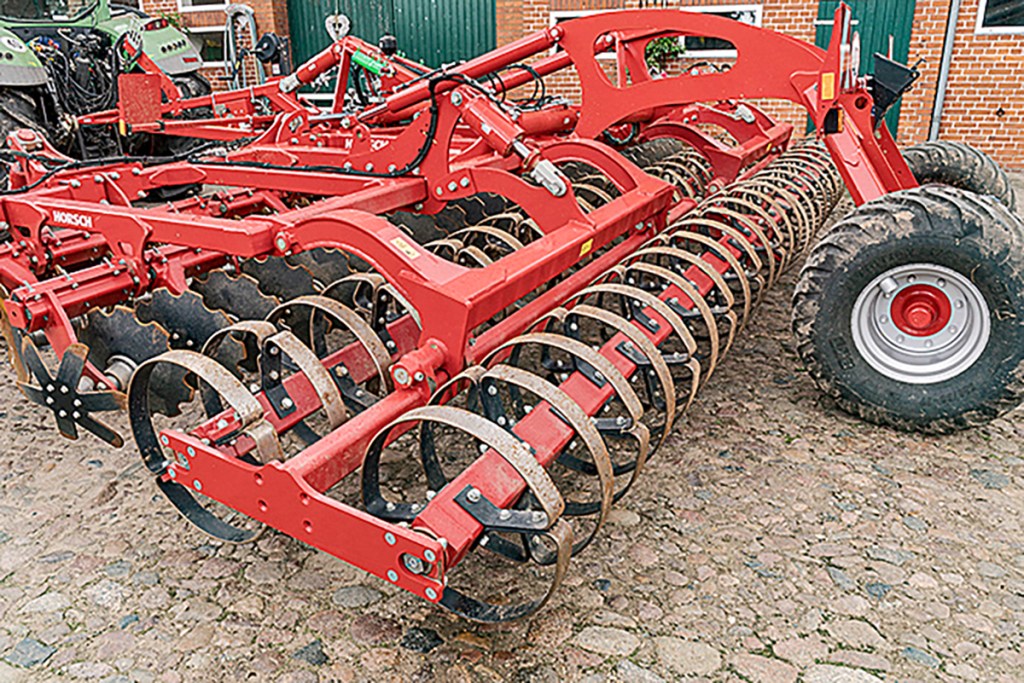
Headland turns
Headland turns are either made with the running gear lowered or using the roller, which is recommended by Horsch. In the latter case, a big hydraulic cylinder on the drawbar raises the front end. During field work, this is in floating position. For greater ground clearance, your can raise the lower links.
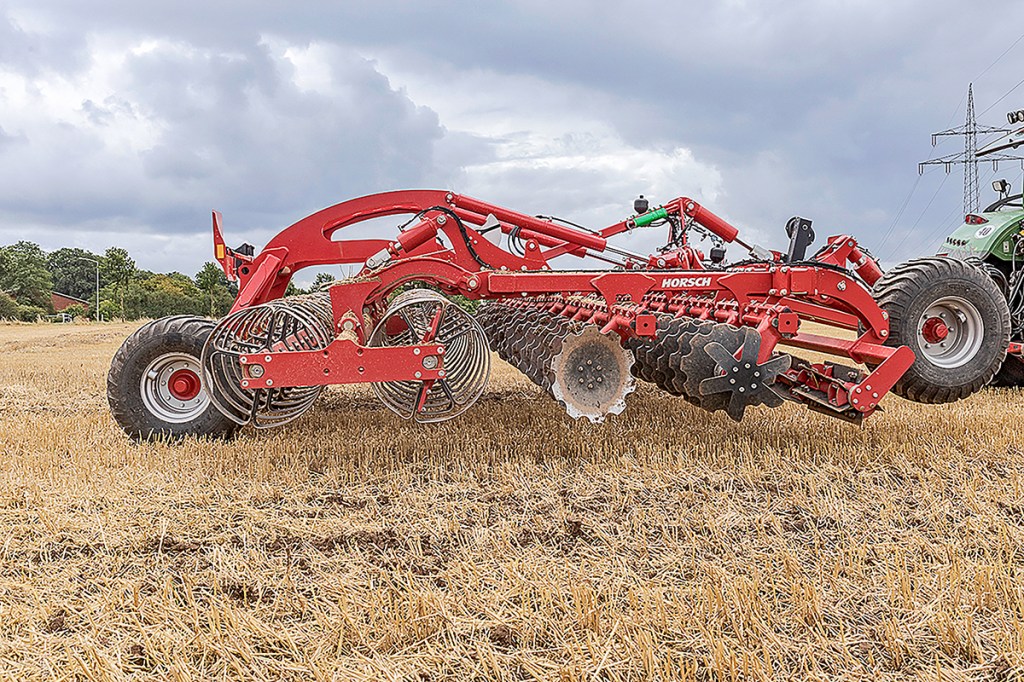
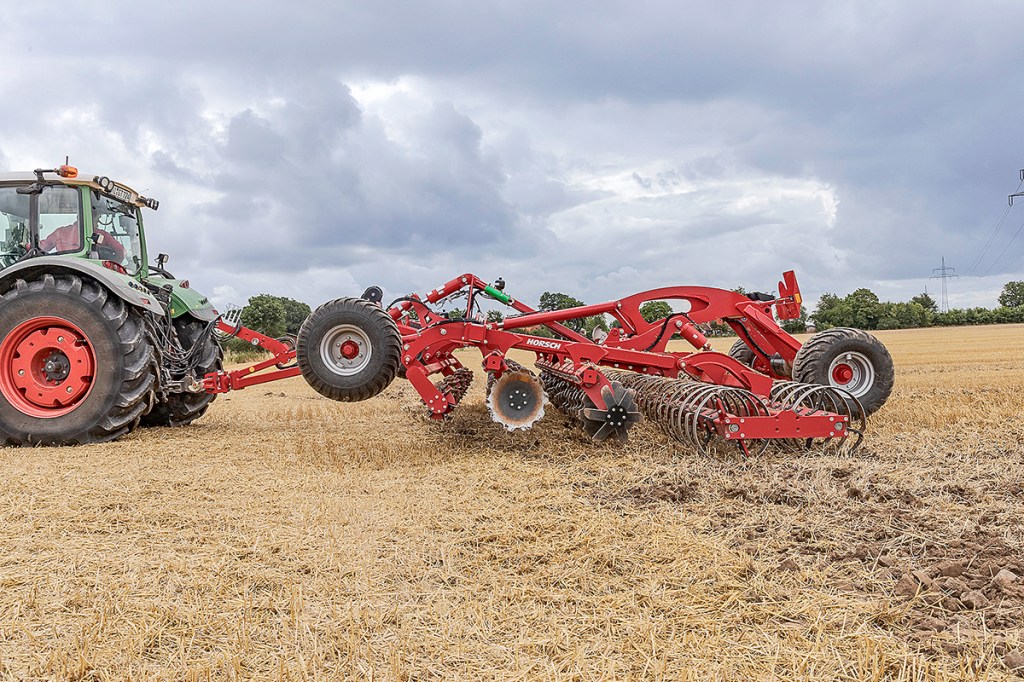
The 6 RT road-going running gear goes with chunky 520/50-17 tyres — a suitable size. For fieldwork, the transport axle is suspended: to do this, the axle is raised almost all the way up before setting the spool to float. Damped by a nitrogen accumulator, the RT running gear doesn’t transmit any shock loads to the frame, resulting in a smoother ride for the user. Horsch calls this cushioning system SoftRide.
Good work for a fair price
We were pleased with the finish — the discs were always able to penetrate the soil while levelling and mixing were also excellent. Fuel consumption was between 3 and 7l/ha, depending on the working depth, speed and conditions. The cultivator didn’t crab to one side, and there were no bung-ups. Just what the doctor ordered.
Retail list price for the base specification machine without roller and coupling system is £38,650. With the lower link attachment (£1,590), double ring flex roller (£12,240), hydraulic depth adjustment (£2,120), leading knife roller system (£10,730), outboard discs (£1,170), air brakes (£2,020) and some other ancillary costs, the price climbs to £68,520, which, to be fair, seems a reasonable price for a solidly built machine.
Other details
- There is also a coupling system for Cat IV lower links.
- The MiniDrill seeder is compatible.
- A lot of soil collects on top of the frame, especially in the middle.
- The Joker 6 RT has 21 grease nipples, many of which have to be serviced every 25 or 50 operating hours — that’s fine.
- Horsch offers six alternative rollers for the RT range.
- Minimum tractor power is specified at about 180hp. We recommend 300hp if you plan on working deep.

Summary
With the Joker 6 RT, Horsch has a solidly built compact disc harrow in its range.
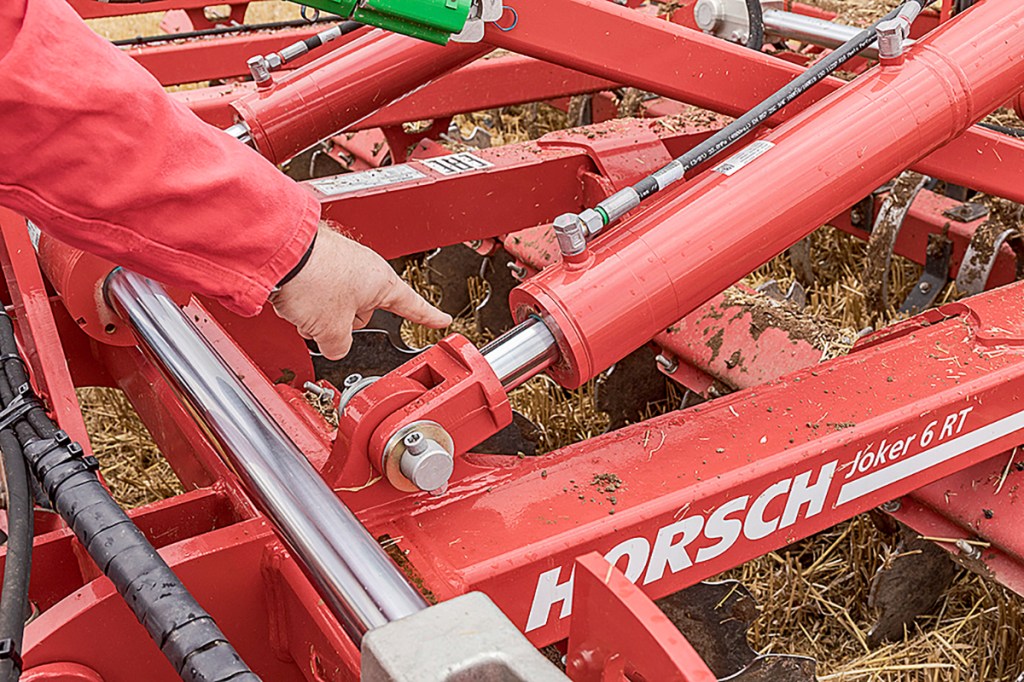
The machine ticks nearly all the boxes — from convenient tractor attachment to the impressive finish. A minor hitch, though, is the aluminium clips that are fitted to lock the machine into transport position — ideally this job should be done without having to leave the cab. Once this is sorted, you’ll have a joker up your sleeve for many different conditions.
Lüder Görtmüller/Sönke Schulz
For more up-to-date farming news click here and subscribe now to profi and save.






